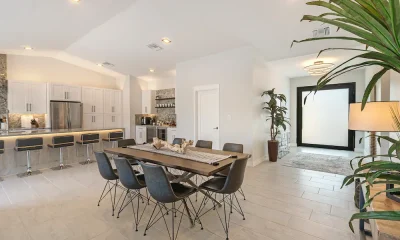Renovation
5 Things To Know About Installing LED Lighting In Residential Properties

Home lighting has evolved over the years. Though the traditional light bulbs are still available on the market, more modern lighting fixtures are rising. Such innovative lighting sources include light-emitting diode (LED) technology that’s slowly taking over the market.
LED lighting produces light by sending an electric current through a semiconductor material like gallium nitride. Various residential and business LED lighting from Airis is also being offered by other home solution providers in your area, it’s advisable to research first before considering what to buy.
To give you a better idea of what to expect, here are five things you must know about installing LED lighting in your residential property:
1. Long-Lasting
LED lights have a long lifespan which means they’re less likely to need replacement in the near future. On the other hand, traditional bulbs lose their brightness over time and require frequent changes in the process. This light fixture is designed to last for 50,000 hours or more. That’s the equivalent of nearly six to 12 straight years, depending on everyday use. The long-lasting nature of this lighting technology makes it a popular choice among homeowners. These lights can help you reduce maintenance and replacement costs.
Additionally, LED lights perform at their best during hot and cold weather conditions, which means you can enjoy the maximum performance without worrying about inclement weather. On top of that, LEDs don’t contain mercury like compact fluorescent lights (CFL) which means they won’t pose a risk if they break.
2. Energy Efficiency
LED lights are designed to be energy-efficient. That’s one of the most significant selling points for this lighting technology. For instance, a standard 60-watt incandescent bulb produces the same brightness output as a 12-watt LED bulb. Installing these fixtures provide better illumination while using very little electricity.
With that said, LEDs are five times more economical than traditional light fixtures. Opting for LED lighting has the potential to reduce energy consumption. As a result, it makes your home more energy-efficient, which can save you money in the long run.
3. Widespread Compatibility

LED lighting fixtures are made to function seamlessly with your existing electrical system. This approach makes the installation process quick and easy. Whenever you replace an old light fixture with an LED option, you don’t have to worry about updating or modifying your home’s electrical components.
If you have a dimmer and want to determine its compatibility, check the maximum and minimum load range of the switch itself. There are two most common types of dimmers: trailing and leading-edge dimmer.
A trailing edge dimmer has a lower load range than a standard one, which means it’s specifically intended for LEDs. On the contrary, a leading-edge dimmer is conventionally used for incandescent bulbs and halogen due to its higher load capacity.
4. Aesthetic Appeal
As a property owner, aesthetic appeal is one of your top priorities. LEDs offer the right amount of brightness ideal for an indoor and outdoor environment. This fixture comes in various shapes, sizes, colors, and styles that can complement the overall architecture of your home. You can install them wherever you need extra illumination on your property.
For instance, LEDs can help you create the perfect mood for entertaining guests in your outdoor space. They can also be an excellent source of illumination for your driveways and walkways. In addition, you may place them in your landscape to add a warm ambiance to your backyard.
These several functions have the potential to improve your property’s visibility and may increase the value of your home. Getting new LED lights means you can enjoy their benefits for many years to come.
5. Lighting Color Temperature
Many homeowners don’t like using overhead lighting because it creates a glare that isn’t comfortable for the eyes. Color temperature is a measurement of how warm or cool a light appears. For example, if you want to achieve a more natural effect in your home’s interior, look for lights with a color temperature of 2,700K to 3,000K. It’ll produce the right kind of lighting that’s similar to sunlight.
On the other hand, LED bulbs with a color temperature of 5,000K and 6,500K are more appropriate for outdoor applications. Such outdoor structures as driveways, walkways, and patios since LEDs produce bright illumination. Moreover, a lighting color temperature isn’t an indication of brightness or luminosity. It measures only the light source’s chromaticity along the visible spectrum, where green, yellow, and orange are warm colors while blue is a cool color.
Conclusion
Installing LED lighting in your residential property has many benefits to offer. While there are several things you must consider, it’s best to have careful planning and execution of the light placement throughout your property. Such an installation will help you achieve the intended effect for improving your home’s aesthetics and function.


